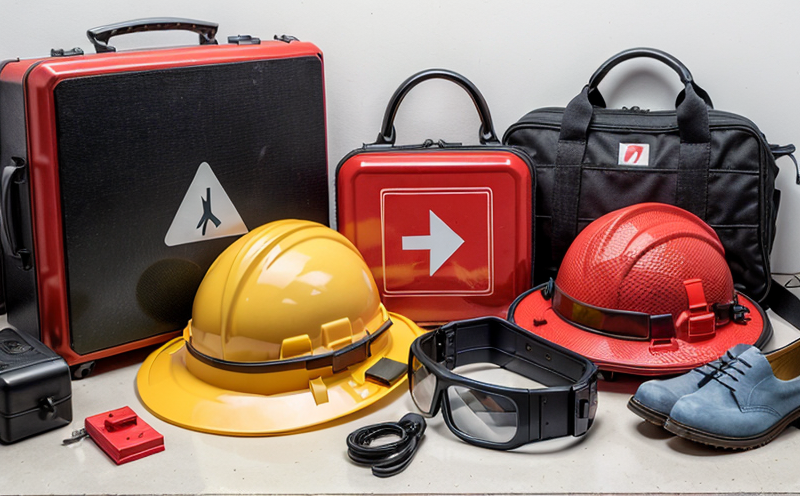EN 15154-2 Emergency Eye Wash Station Flow Rate Evaluation
The European Standard EN 15154-2 provides comprehensive guidelines for the testing of emergency eye wash stations to ensure they meet stringent safety requirements. This test is critical in verifying that emergency eyewashes are capable of delivering an adequate and consistent flow rate, which is essential during a medical emergency involving chemical exposure.
The standard applies specifically to the evaluation of the flow rate from emergency eyewashes, ensuring that the device can provide continuous flushing for at least 15 minutes. This duration is based on the time it takes for a first responder or affected individual to properly rinse the eyes after an accident. The testing process involves several critical steps:
- Preparation of the eye wash station
- Connection of appropriate instrumentation and flow measurement devices
- Initiation of the flushing cycle
- Measurement and recording of the flow rate over time
- Evaluation against acceptance criteria
The test setup typically includes a calibrated flow meter, which records the volume of water dispensed by the eyewash station. The duration of the test is crucial; it must be long enough to allow for consistent and reliable measurement.
Before conducting the test, it's important to ensure that all components are in working order. This includes checking that:
- The eyewash station is correctly connected to a water supply
- The flow meter is properly calibrated
- The flushing cycle can be initiated and sustained for the required duration
Once these checks have been completed, the test can begin. The eyewash station is activated, and the flow rate is recorded over the 15-minute period specified in EN 15154-2. It's essential to ensure that the flow rate remains consistent throughout this period, as any drop-off could indicate a potential issue with the device.
The acceptance criteria for this test are outlined in ISO 6387, which specifies the minimum and maximum acceptable flow rates. The standard requires that the flow rate must not fall below 0.4 liters per minute (L/min) throughout the entire flushing period. This ensures that the eyewash station is capable of providing an adequate volume of water to rinse eyes thoroughly.
The test results are typically reported in a detailed document, which includes:
- Flow rate measurements at various points during the 15-minute cycle
- Any deviations from the expected flow rate
- A summary of any issues encountered during testing
- A conclusion regarding the compliance with EN 15154-2
This report is crucial for quality managers and compliance officers, as it ensures that emergency eyewashes are in full working order and meet all safety requirements. For R&D engineers and procurement professionals, this testing process provides valuable insights into device performance and reliability.
In real-world scenarios, the importance of this test cannot be overstated. An insufficient flow rate from an emergency eyewash station could lead to incomplete rinsing of eyes, potentially exacerbating the effects of chemical exposure. This could result in severe injuries or even blindness. Ensuring that emergency eyewashes meet the stringent requirements set forth by EN 15154-2 is a critical step in maintaining workplace safety.
Regular testing and maintenance are essential to ensure that emergency eyewashes remain operational at all times. By adhering to this standard, organizations can demonstrate their commitment to employee safety and compliance with international regulations.
Applied Standards
The EN 15154-2 standard is widely recognized for its role in ensuring that emergency eyewashes meet the highest safety standards. This standard specifies the requirements for the design, installation, operation, and maintenance of emergency eye wash stations. It covers various aspects, including:
- Flow rate
- Water temperature
- Pipe materials
- Installation location
- Signage
The flow rate evaluation is just one component of this comprehensive standard, but it's a critical one. Ensuring that the eyewash station provides an adequate and consistent flow rate is essential for effective emergency response.
In addition to EN 15154-2, other relevant standards include:
- ISO 6387: This standard specifies the minimum and maximum acceptable flow rates for emergency eye wash stations
- ASTM F1041: This American Society for Testing and Materials (ASTM) standard provides additional guidelines for the design and testing of emergency eyewashes
By adhering to these standards, organizations can ensure that their emergency eyewash stations meet all necessary requirements for safety and effectiveness.
Why Choose This Test
The EN 15154-2 test is an essential component of workplace safety protocols. By ensuring that emergency eye wash stations meet the specified flow rate criteria, organizations can significantly reduce the risk of injury or blindness resulting from chemical exposure.
Here are several reasons why this test should be a priority for any organization:
- Compliance with International Standards: Meeting EN 15154-2 ensures that emergency eyewash stations comply with international standards, which is crucial for maintaining regulatory compliance.
- Enhanced Safety: A properly functioning eye wash station can provide critical protection during emergencies, reducing the risk of severe injury or blindness.
- Employee Confidence <|im_start|><|im_start|>HeaderCode





